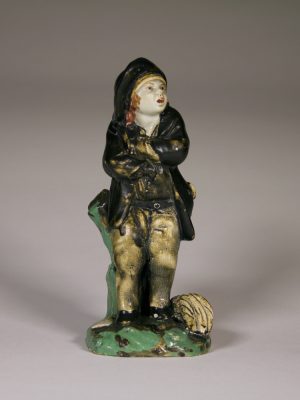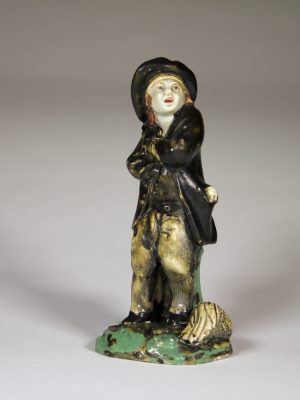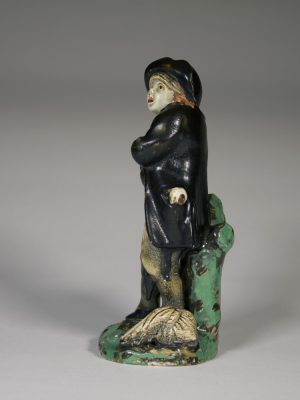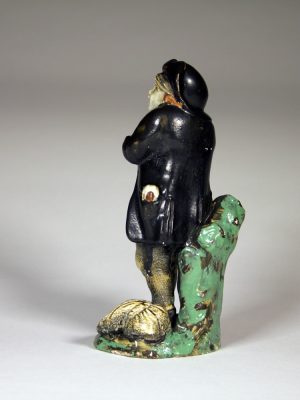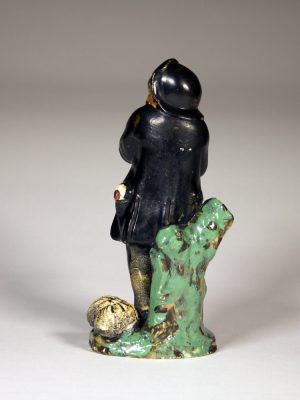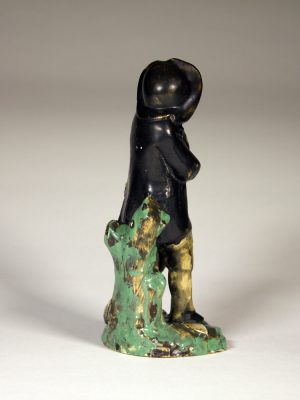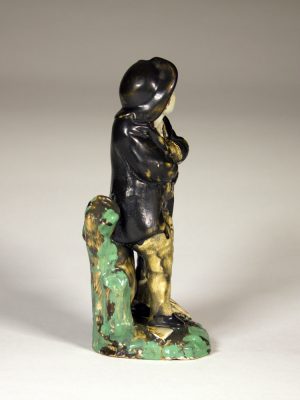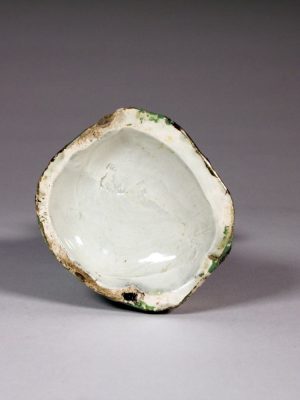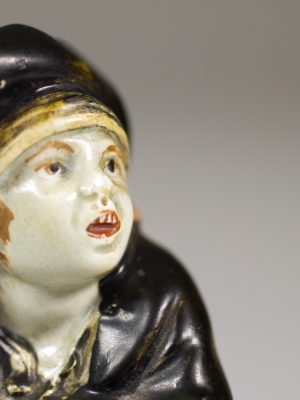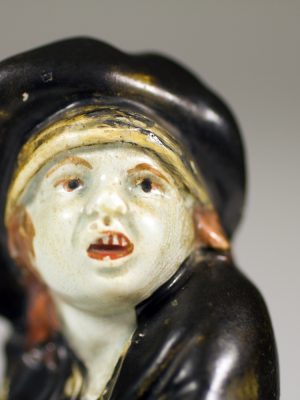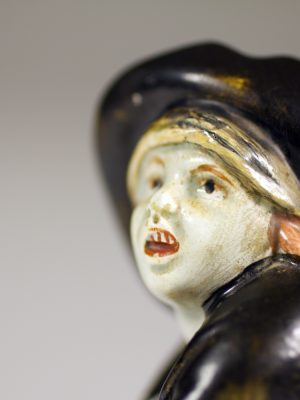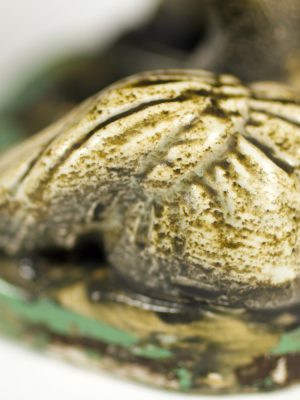This pearlware figure of a Chimney Sweep was made in Staffordshire in the early nineteenth century after an earlier figure by Paul-Louis Cyfflé.
Cyfflé was one of the great modellers of the eighteenth century. He worked in the Lorraine region of France from the 1750s to the 1770s. He became chief sculptor to Duke Stanislas of Lorraine, King of Poland, in 1757.
When Stanislas died in 1766, Cyfflé’s fortunes fell into a steady decline. In 1780 he was forced to sell his models and moulds as part of a bankruptcy settlement. They were bought up by the Saint-Clément, Niderviller and Toul-Bellevue factories and popularized from there. Cyfflé’s work went on to be copied by factories across continental Europe, Russia and England well into the nineteenth and twentieth century.
“Le Ramoneur”, as Cyfflé’s original is known, was most often adapted as a representation of winter. ‘Le ramoneur’ is french for ‘chimney sweep’. This is one of very few interpretations of Cyfflé’s original where the boy is depicted with this trade. The unknown Staffordshire potter who produced this example got it right.
The blueish tint to the glaze, one of the characteristics of pearlware, reinforces the muddy tone of the enamels and the deathly pallor of the boy. There’s no doubt such boys had a dirty job.
17.5 cm in height
For further information about Le Ramoneur and other figures by Paul-Louis Cyfflé, see Catherine Calame’s “Cyfflé, Orfèvre de l’argile”, an exhibition catalogue from a show of the same name. Published in Saint-Clément, 2009.

